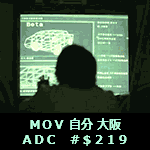|
I did the exact same thing you are doing (except I did it from scratch for an beside table), and with a crappy chisel it took 10 minutes to finish and looks perfect. I actually did it at right angles to make the shelf I installed easier for me to cut and be precise on.
|
|
|
|

|
| # ? May 31, 2024 01:47 |
|
GEMorris posted:As there's no reason to cut a curve I don't know why a coping saw would be preferred over a crosscut backsaw. That's not to say you couldn't accomplish the goal with a coping saw. I was thinking you'd put the blade in the existing notch and cut parallel with it to remove the waste (which you couldn't do with a wider saw). Just thinking in terms of minimal tool requirements.
|
|
|
|
Hubis posted:I was thinking you'd put the blade in the existing notch and cut parallel with it to remove the waste (which you couldn't do with a wider saw). Just thinking in terms of minimal tool requirements. Yes. Very versatile saw, and cheap. Turn the blade around and you've got a kabuki saw.
|
|
|
|
Hubis posted:I was thinking you'd put the blade in the existing notch and cut parallel with it to remove the waste (which you couldn't do with a wider saw). Just thinking in terms of minimal tool requirements. Ahh ok, I was thinking of using the saw only for establishing the new shoulder and the chisel for the rest of the waste removal. Lots of ways to accomplish the task.
|
|
|
|
Imo use a No 4 plane, the only tool anyone needs for any task. Now if you'll excuse me, I need to rotate my tires with my sweet vintage Stanley.
|
|
|
|
excuse me but I believe the correct approach is to cut the table legs off at some height you want, nail the new shelf to the stumps, and then hot glue the table leg pieces to the bottom of the new shelf. Use some drywall spackle to fill in the old leg notches and then paint with exterior house paint so the gaps and stuff don't show.
|
|
|
|
Leperflesh posted:excuse me but I believe the correct approach is to cut the table legs off at some height you want, nail the new shelf to the stumps, and then hot glue the table leg pieces to the bottom of the new shelf. Use some drywall spackle to fill in the old leg notches and then paint with exterior house paint so the gaps and stuff don't show. Do you by chance have a YouTube channel?
|
|
|
|
Skippy Granola posted:By Hand and Eye is a pretty neat read on proportion as it relates to design. BTW I just wanted to say that this is rad, and I may have to pick this up (slash put it on a wish list). I'd been eying it since coming across some of his videos on YouTube (which are worth checking out if you are intrigued by this as well).
|
|
|
|
I've finally gotten to the point where I can reliably straighten and square boards. It might be hard to see in the pic, but in person there's like no gap in between the two possibly future table legs. It may seem like a small thing but I'm really really proud and excited that I can actually do this. The #4 plane I bought is hands down the least used of the planes I've got, the BU jack and radiused jack are miles more useful / practical and the jointer is great for ... jointing. Honestly I'm not seeing a super compelling use-case for the #4 anytime soon. Also there's no way I'm going to thickness boards by hand so I bought a planer thing.
|
|
|
|
Yeah, If I could only have one plane it would be my No. 6. Something with a 15-18" sole makes flattening, roughing, and even smoothing possible. Schwarz recommends the no5 but I find that a bit too small still for straightening ( I have one with a heavily cambered blade I use solely for roughing ). I think being hand tool centric and only having a no4 is just silly. I'm sure sellers can pull it off but expecting a beginner to start there is a cruel joke.
|
|
|
|
GEMorris posted:Yeah, If I could only have one plane it would be my No. 6. Began there as a beginner, can confirm cruel joke. Have a weird question: My great-uncle was a WWII era millwright and I got some handmedown tools. These look like either turning tools or some sort of enormous chisel, any idea what they are? They're a foot and a half long or so and huge. Hammer for scale. 
|
|
|
|
Skew chisels with a radius? Pretty sure they are turning tools.
|
|
|
|
|
Yeah, they look like woodturning scrapers to me.
|
|
|
|
GEMorris posted:Yeah, If I could only have one plane it would be my No. 6. I find a no. 4 a really nice plane to use for a lot of different purposes most of the time. Part of that is also working in schools in Australia teaching woodwork so theres always a pile of 5 1/2 jack planes that need a fair bit of work to get working nice, a few block planes, a few smoothing planes no. 4's and always one trying plane whose size I cannot remember. I moved to a different school this year and so far I'm really enjoying the kids and what I'm teaching. At some point I really want to do a decent sized butchers block board for myself which I could have done at my last school but the table saw was old and a little lovely with a really tiny bed which made cross cutting stuff difficult. The new school however, has a full panel saw which isn't the same as what I've used before but will allow me to glue up lengths of timber before cutting them to depth and gluing them. On top of that we have a helical head cutter in the thicknesser which should be able to smooth out any gently caress ups with the gluing afterwards.
|
|
|
|
Yeah, I'm definitely not saying a no4 is a useless plane. I'm just saying if you were buying your first plane, or for whatever reason you had a limit as to how many planes you could own, a 5 1/2 or a 6 (and I prefer the 6) is a much more versatile plane for performing all of the roughing/straightening/smoothing tasks. It's still more efficient to have a plane dedicated to each task, and a no4 is a perfectly good smoother.
|
|
|
|
Tried to set up my new card scraper this afternoon and failed miserably. I felt like I was getting a little burr on there, but when I tried to use it I'd just get dust. Maybe I need a proper burnisher. I tried both the one from my knife set in the kitchen and a screwdriver, got the same results.
|
|
|
|
ColdPie posted:Tried to set up my new card scraper this afternoon and failed miserably. I felt like I was getting a little burr on there, but when I tried to use it I'd just get dust. Maybe I need a proper burnisher. I tried both the one from my knife set in the kitchen and a screwdriver, got the same results. Did you freehand it or use a vice+jig?
|
|
|
|
Hubis posted:Did you freehand it or use a vice+jig? Pretty much this, though I did the filing without the jig https://www.youtube.com/watch?v=4SG2LUdk-VE
|
|
|
|
ColdPie posted:Tried to set up my new card scraper this afternoon and failed miserably. I felt like I was getting a little burr on there, but when I tried to use it I'd just get dust. Maybe I need a proper burnisher. I tried both the one from my knife set in the kitchen and a screwdriver, got the same results. The standard things to check if you didn't get it to work are 1. really good edge prep, nice perfect 90 degree corners 2. draw out the edges with the burnisher flat against the body of the scraper as a first step 3. use very very little angle when actually raising the burr. maybe 5 or 10 degrees off of parallel with the edge 4. don't push very hard on the burnisher. 5. it only takes like 2-5 strokes on the edge to raise the burr And yeah, I personally found a real burnisher to help a huge amount. They're far harder and smoother (smooth is important) than just about any not-a-burnisher tool you might have laying around.
|
|
|
|
Finally got around to taking a chainsaw to the trunk of that tree I had to get removed from my yard awhile back. The trunk's been sitting on a couple of blocks, ends painted; there's no checking, thankfully, so I guess you can wait awhile before slabbing wood without the wood being ruined. Probably helps that we've been getting a lot of rain. My rig. 2x4 mounted on rails, which guides the "sled" the chainsaw rides on. Meanwhile the trunk is secured both via that 2x4 brace and by a couple of screws toenailed into the top of the "table". Said table is staked into the ground. I didn't have much trouble with things moving while I cut them. Which is a good thing. Aside from that it's not a great rig -- I had some accuracy issues and the cuts weren't all that straight. But it worked well enough. If I was going to seriously go into slabbing green wood, I'd get one of those welded-steel setups. And a gas-powered chainsaw, with a larger blade. But like I said, it works.  The wood is Leyland cypress, a hybrid evergreen. In all probability it's not very good wood; at the very least it's incredibly sappy. I'm hoping that will tail off a bit as the wood dries, or else it's going to gunk up my tools something fierce. Current thinking is to turn it into an outdoor bench.
|
|
|
I made a tiny chisel from a nail and a scrap of ash. Works great for cutting small mortises etc.
|
|
|
|
|
Almost done collecting the basic tools of woodworking on a hamstring budget. Picked up a Delta bandsaw on kijiji today for 160 bucks plus some old gift cards I wasn't going to use. Now I want to bandsaw all the things. Also makes all the re-sawing I was doing manually using a jigsaw so much easier.
|
|
|
|
I want to rename hard maple to maple (difficult). I'm probably going to order a replacement handle for my Stanley No. 6 because this is the second time flattening boards and getting a really gnarly blister out of it, too.   Walnut is dreamy to work with. Hard maple... not so much.
|
|
|
|
I've got a line on a Delta 36-451 10" table saw in very good condition with a Biesemeyer fence for $150. Seems like a steal, no? It looks to be just about the right size to cram into my garage but still have a decent sized table. It's on a good stand and currently wired for 115v. I'm gonna have a long drive tomorrow to go get it so if there's any big gotchas with this saw, I'd appreciate finding out!
|
|
|
|
Howdy fellas, I need some advice . I'm trying to refinish a maple guitar neck, and have little experience with clear coating, specifically with spray polyeurethane. What should I be doing, and does anyone have a suggestion for a good source of information about this? I've checked youtube and google but there are a LOT of conflicting reports, and I have a preference to seeing how things are done than being told how to do them. I know that initially you do a tack coat, with short overlapping sprays just to give something for the other coats to grab on to, but my question is after that, generally what is the established procedure for getting a smooth coat. I chose polyurethane over nitrocellulose for availability and durability. I apologise for the confused nature of my post but I honestly have no fricking clue what to do, or what to ask even.
|
|
|
|
Leperflesh posted:I've got a line on a Delta 36-451 10" table saw in very good condition with a Biesemeyer fence for $150. Seems like a steal, no? It looks to be just about the right size to cram into my garage but still have a decent sized table. It's on a good stand and currently wired for 115v. Definitely go for it. The Delta 36-451 looks very similar to most contractor saws, which can make it tough to fit in a garage with the motor sticking out of the back. But the Biesemeyer fence alone is worth it and could always move over to a nicer saw if you felt like upgrading in the future. I just bought a similar saw/fence setup with an older craftsman and a Vega fence and I'm loving it so far. It's tough to fit in the garage with the 52" long extended table top and motor sticking out of the back, but I'll make it work.
|
|
|
|
Mephiston posted:Howdy fellas, I need some advice . I assume you're going with spray can stuff? Sand between coats with some fine grit paper, don't overdo it on each coat, give it plenty of time to dry. Are you trying to do the headstock and back, but not the fretboard?
|
|
|
|
Yeah, I've masked off the fretboard because it's rosewood, and I've read that you really don't want to seal it with any kind of clear coat. Ideally what grits should I be using to sand? I've had problems on my test lump of wood where I wet sanded with like 800 grit, and I burned through the finish pretty fast. One more question I have, is how much should I be spraying on each coat? I've read conflicting advice where some say you should spray it until its wet but not dripping, and others say you should just do the equivalent of a tack coat every time. Also yeah, I'm using a spray can. Thanks for your help, too.
|
|
|
|
I have a question for anyone who has experience with sliding cabinet doors. I'm planning to build a media console out of high quality walnut-veneer ply.  no legs or doors added yet, plan is to have 3 doors so one third of it would be open at any given time. (center will be for records) My question is, do I need to be concerned with tearout in the channel the doors would be in? I was hoping I could get away with just waxing the channel or maybe epoxy, should I be planning on adding an aluminum channel or something instead of counting on it to slide alright in ply? oh, found these images, this is essentially what I'm asking about : http://img.edilportale.com/news/34017_09.jpg http://img.edilportale.com/news/34017_13.jpg MMD3 fucked around with this message at 22:03 on Mar 13, 2017 |
|
|
|
There's a Wood Whisperer video for a "low entertainment center" that used walnut veneer ply and had two sliding doors like you described. Check it out.
|
|
|
|
MMD3 posted:I have a question for anyone who has experience with sliding cabinet doors. I'm not a fan of plywood against anything, I'd edge strip it with some actual wood.
|
|
|
|
Mephiston posted:Yeah, I've masked off the fretboard because it's rosewood, and I've read that you really don't want to seal it with any kind of clear coat. RIght, Rosewood is a naturally oily wood, you don't want to topcoat that. You know about maintaining that already I'm sure. I'd spray somewhere in between, a little more than a tack coat. Keep in mind it's humidity and temp sensitive. If it's humid or cold, err on the side of not enough. A nice spring day is ideal. If you've pre-sanded it to say 400 or 600, I'd think 800 would be fine, don't overdo it. You're just busting down the raised grain with that, you've already gotten the wood down as smooth as you need prior.
|
|
|
|
Mr. Mambold posted:I'm not a fan of plywood against anything, I'd edge strip it with some actual wood. yeah, might still end up doing that, the goal was to keep the build relatively low effort and I've never done any edge stripping, will to give it a shot though... but it doesn't answer my question about the sliding doors :/
|
|
|
|
MMD3 posted:yeah, might still end up doing that, the goal was to keep the build relatively low effort and I've never done any edge stripping, will to give it a shot though... but it doesn't answer my question about the sliding doors :/ Yeah wax is fine, but I'd just go with the full edge of the door into a rabbeted channel instead of that protruding tongue
|
|
|
|
Quoting from the gif thread:El Mero Mero posted:everything on this twitter is great https://twitter.com/TheJoinery_jp
|
|
|
|
Falco posted:Definitely go for it. The Delta 36-451 looks very similar to most contractor saws, which can make it tough to fit in a garage with the motor sticking out of the back. But the Biesemeyer fence alone is worth it and could always move over to a nicer saw if you felt like upgrading in the future. I just bought a similar saw/fence setup with an older craftsman and a Vega fence and I'm loving it so far. It's tough to fit in the garage with the 52" long extended table top and motor sticking out of the back, but I'll make it work. I bought it! Pictures tomorrow, it's dark right now. No guards, no splitter or riving knife, and one rubber foot is missing. In good condition though, the dude is a cabinet maker moving up to a larger table saw. It runs nice and quiet. There's no provision for sawdust management at all, I am going to have to make some inserts for the stand so I can box in the bottom of the saw and put a nozzle to attach a shop vac or whatever to it. The motor takes ten seconds to take off, it's ridiculously easy to do so no problem storing the saw against a wall. It's really solid, cast iron top, should be fine for My First Real Table Saw. Thanks for the help.
|
|
|
|
Despite not working in the woodshop much recently due to other projects/family stuff, I've acquired a new tool. I have wanted to move the large Rockwell/Delta 20" saw over to the metal working area for some time now. I can still use it for resawing, but I'll have to fix the gear box in it first. So, that meant I needed a smaller bandsaw for the woodworking area. I pretty much gave away the 14" Jet I had and swore off any more imports. I wanted old american iron. So this weekend, when I came across this completely rebuilt Walker Turner 14" Bandsaw from a fellow retiring at a decent price, I bit the bullet. It wasn't cheap, but it was cheaper than me buying anything similar and then dropping $300 in rebuilding it. Plus, it came with a fence, 12 blades, new rubber tires, all new bearings, and it has the high/low gearbox- it's a Wood/Metal saw. The only downside is the original motor was swapped out with a Grizzly 1HP. I would have preferred to rebuild the original or used a USA Baldor, but that's just personal preference. The owner was sad to see it go, but the lucky guy was selling his shop and house to travel the world with his girlfriend.     It cuts like a dream. It's nothing like the crappy JET I had before. If I have time I'll rewire it later in the week. The orange PVC cord just does not fit it. Oh and figure out what oil it takes in the gearbox. /toolsnob the spyder fucked around with this message at 07:08 on Mar 14, 2017 |
|
|
|
Leperflesh posted:I bought it! Awesome, I'm glad it all worked out and for a great price! Looking forward to seeing some photos. I need to dig into the Craftsman I picked up to see if the motor is quick and easy to unbolt to sung it up closer to the wall in our garage. For dust management on the contractor saws, something like these dust hoods are supposed to help. Plus somehow making a removable cover that can go around the space between the motor and stand frame. I've seen some people use magnets to do this to make it easy to remove. And you could always pop it onto a mobile wheeled base to move it around easier instead of messing with the rubber feet. Mine came with factory wheels, but they're total poo poo. I just hate spending $50 on a basic platform for it to sit on.
|
|
|
|
.
nosleep fucked around with this message at 16:53 on Mar 21, 2017 |
|
|
|

|
| # ? May 31, 2024 01:47 |
|
I'm building a window bench seat in my living room and I'm having a hard time deciding how I should cut the top surface My plan when building this was that the window sills will sit flush with the seating surface, but I'm not sure if it's feasible to cut a single large piece of 3/4" plywood accurately. What's the best way I should go forward on this? Single piece of plywood or cut separate pieces for the windowsills? If i do a single piece I thought using cardboard (CAD lol) to mock up might work but i'm open to suggestions if that's not a great idea.
|
|
|































